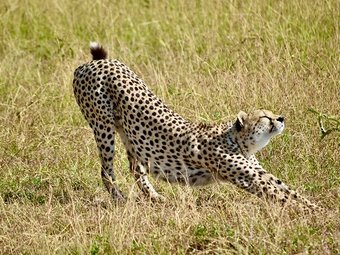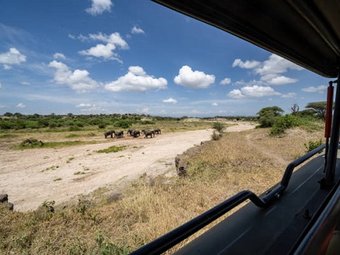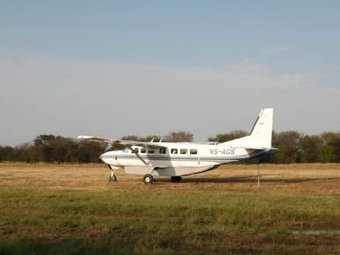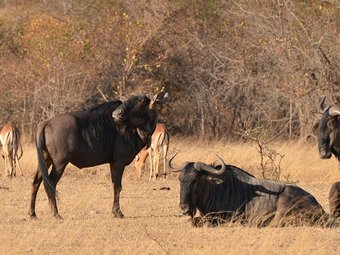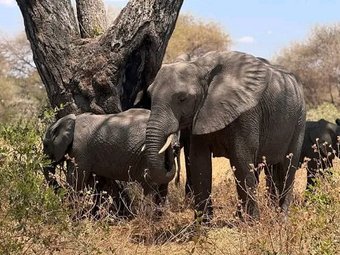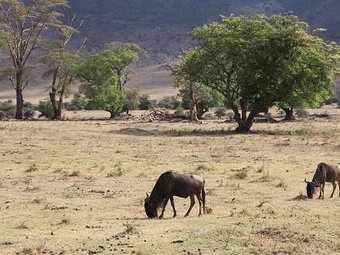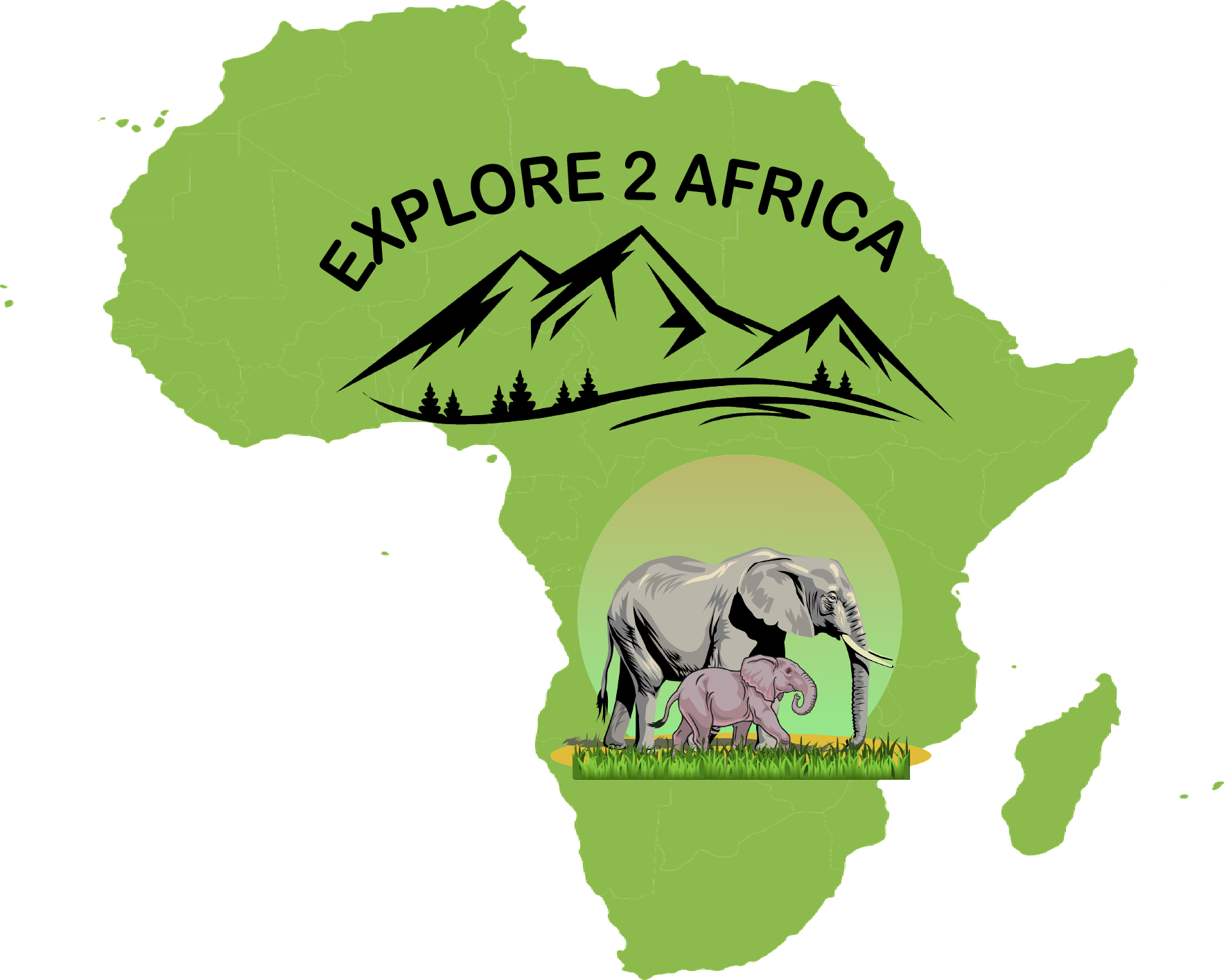Climbing Kilimanjaro
7 days—Climbing Kilimanjaro starts from Moshi at 8:00 am or Arusha at 7:30 am to conquer Africa's Majestic Peak at 5895 meters and usually covers 64 km.
$1500-2700 USD
pp
Safari summary
Climbing Kilimanjaro at 5,895 meters (19,341 feet) is a remarkable adventure, taking you through diverse ecosystems from rainforests to glaciers that take 19–32 hours of walking. With proper training, guides, and gear, you'll navigate the challenging terrain, culminating in a breathtaking summit experience. Remember to acclimatize, stay hydrated, and savor the unique journey up Africa's highest peak.
Best climbing Mount Kilimanjaro highlights
1. Varied Routes: Choose from routes like Machame, Lemosho, or Marangu, each offering unique challenges and scenery.
2. Lush Rainforests: Begin the journey in tropical rainforests, encountering rich biodiversity.
3. Alpine Desert: Ascend into otherworldly alpine deserts with surreal landscapes.
4. Uhuru Peak: Reach the summit, Uhuru Peak, and stand on the highest point in Africa.
5. Spectacular Sunrises: Witness stunning sunrise vistas over the vast African plains.
6. Glaciated Peaks: Encounter glaciers and snowfields near the summit, a unique feature near the equator.
7. Acclimatization: Experience a gradual ascent for better acclimatization and increased chances of success.
8. Starlit Nights: Camp under clear, star-filled skies at higher altitudes.
9. Cultural Insights: Interact with local guides, gaining insight into Tanzanian culture and traditions.
10. Personal Triumph: Achieve a remarkable personal milestone while standing atop a monumental natural wonder.
What is the best time of year to climb Kilimanjaro?
The best time to climb Kilimanjaro is during the dry season, which runs from June to October and January to February. These months generally have the most stable weather conditions and clear skies, making for better views and a safer climb.
How long does it take to climb Kilimanjaro?
The time it takes to climb Kilimanjaro depends on the route taken and the climber's physical fitness level. The most popular routes take between 5 and 9 days to reach the summit. However, it is recommended to take at least 7 to 8 days to allow for proper acclimatization and increase the chances of a successful summit. It is important to note that climbing Kilimanjaro can be a strenuous and challenging activity, and proper preparation and training are essential.
What is the highest point on Kilimanjaro?
The highest point on Kilimanjaro is Uhuru Peak, which stands at 5,895 meters (19,341 feet) above sea level. It is the highest point in Africa and one of the Seven Summits, which are the highest peaks on each of the seven continents. Uhuru Peak is located on the Kibo crater rim, one of three volcanic cones that make up Kilimanjaro.
Do I need any special equipment to climb Kilimanjaro?
Yes, you will need some special equipment to climb Kilimanjaro. Some of the essential equipment includes:
1. Good quality hiking boots with ankle support
2. Warm and waterproof clothing, including thermal layers, a windproof jacket, and a down jacket
3. A warm sleeping bag rated for sub-zero temperatures
4. A backpack to carry your gear and supplies
5. Trekking poles for stability on the steep terrain
6. Sunglasses, sunscreen, and a hat to protect you from the sun
7. A headlamp or flashlight for early morning starts and night hikes
8. Water bottles or a hydration system to stay hydrated
9. Snacks and energy bars to keep your energy levels up
Is it necessary to hire a guide or can I climb Kilimanjaro on my own?
While it is technically possible to climb Kilimanjaro without a guide, it is highly recommended to hire a guide or join a guided tour for several reasons. First and foremost, Kilimanjaro is a challenging and dangerous climb, and having an experienced guide who knows the route and can assist with any issues that may arise can greatly increase your chances of reaching the summit safely. Additionally, hiring a guide supports the local economy and ensures that you are following ethical and sustainable practices on the mountain. Finally, the Tanzanian government requires all climbers to have a licensed guide, so attempting to climb without one could result in legal issues.
About this tour
| Tour type | Set-date, set-itinerary, group | |
| Main focus | Hiking | trekking | |
| Activity level | Strenuous activity | |
| Best months | January, February, March, June, July, August, September, October, December | |
| Countries | ||
| Parks |
Fine details
Safari highlights
- Hiking | trekking
What’s included?
- Accommodation
- Meals
What’s not included?
- Tips and gratuities
- Visas
Itinerary
Machame Gate to Machame Camp
Kilimanjaro
Machame Gate (1,800 m/5,905 ft) to Machame Camp (3,000 m/9,840 ft) After breakfast and a final equipment check, drive to the Machame Gate. Start the trek through a lush rainforest and gradually ascend. Reach Machame Camp, set up tents, and spend the night.
Machame Camp
Forest Camp to Moir Hut Camp
Kilimanjaro
Elevation: 2,650m (8,694ft) to 4,200m (13,780ft) Ascend through moorland, experiencing changing landscapes. Pass the unique Senecio trees and enjoy panoramic views. Reach Moir Hut Camp, nestled at the base of Lent Hills.
Moir Hut Camp
Moir Hut Camp to Barranco Camp
Kilimanjaro
Elevation: 4,200m (13,780ft) to 3,976m (13,045ft) Traverse rocky terrain and ascend Lent Hills. Descend to the stunning Barranco Valley. Camp at Barranco Camp, beneath the towering Barranco Wall.
Barranco Camp
Barranco Camp to Karanga Camp
Kilimanjaro
Elevation: 3,976m (13,045ft) to 3,995m (13,106ft) Conquer the iconic Barranco Wall. Journey through alpine desert landscapes. Arrive at Karanga Camp, with vistas of the Southern Glaciers.
Karanga Camp
Karanga Camp to Barafu Camp
Kilimanjaro
Elevation: 3,995m (13,106ft) to 4,673m (15,331ft) Ascend to Barafu Camp, the base for your summit attempt. Prepare for the challenging climb ahead. Rest and acclimatize at Barafu, surrounded by a surreal mountain landscape.
Barafu Camp
Barafu to the Summit to Mweka Camp
Kilimanjaro
Summit Elevation: 5,895m (19,341ft) Descend to Mweka Camp: 3,100m (10,170ft) Begin your summit push in the early hours, aiming for Uhuru Peak (5,895m or 19,341ft). Witness a spectacular sunrise over Africa from the highest point. Descend to Mweka Camp, celebrating your achievement.
Mweka Camp
Mweka Camp to Arusha or Moshi
Elevation: 3,100m (10,170ft) to 1,640m (5,380ft) Descend through lush rainforests, recalling your epic journey. Reach Mweka Gate, where you'll receive your summit certificates. Return to Arusha or Moshi, reflecting on your unforgettable Kilimanjaro experience.
Arusha or Moshi
Here are the latest 6 tours by Explore 2 Africa. See all 496 tours.
Selous Safari Tour From Pongwe
Tour by: Explore 2 Africa
Countries:

Focus: Game drives
Worth Tarangire National Park
Tour by: Explore 2 Africa
Countries:

Focus: Game drives
Mikumi Safari Trip From Pongwe
Tour by: Explore 2 Africa
Countries:

Focus: Game drives
Serengeti Ngorongoro in July
Tour by: Explore 2 Africa
Countries:

Focus: Game drives
Selous Safari From Matemwe
Tour by: Explore 2 Africa
Countries:

Focus: Game drives
Selous Safari From Matemwe
Tour by: Explore 2 Africa
Countries:

Focus: Game drives
Cleanliness of vehicle
Meet and greet team
Quality of itinerary
Responsiveness of staff
